from a photographer's perspective one of the best situations to get good bird photos is often when they are standing on top of a tree. first, they are easy to spot. as long as you are not facing into the sun the lighting is likely very good and there are few disturbing elements. also most birds will often remain in one place once they position themselves on a treetop. that means there is often sufficient time to set up for the ideal shot. the main challenge is distance so a powerful zoom is great to have.
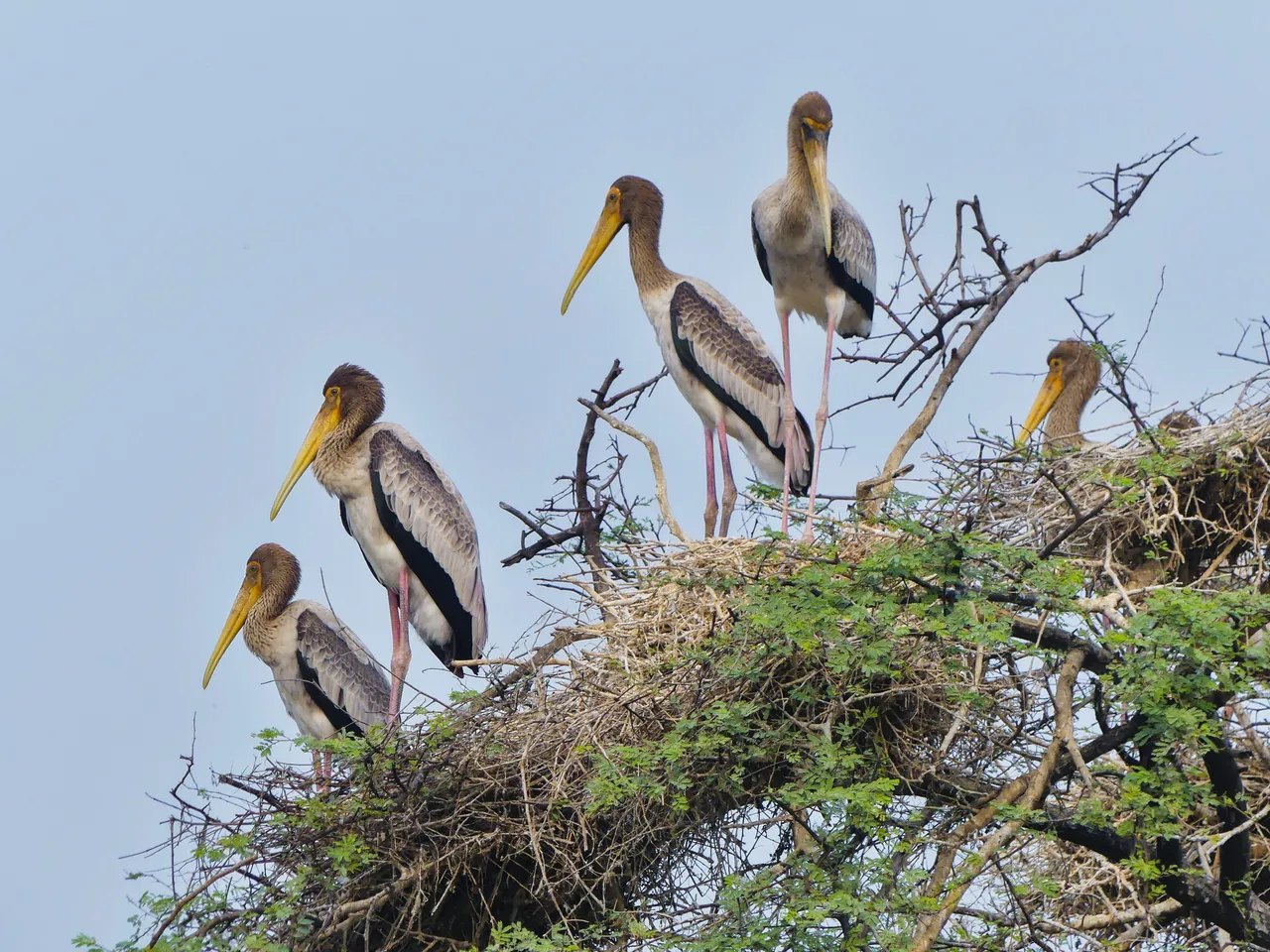
with their huge size and long legs these painted storks (Mycteria leucocephala) look comically out of place on the the thin branches of treetops but that is often where they build their nests so they must actually be quite at home there.
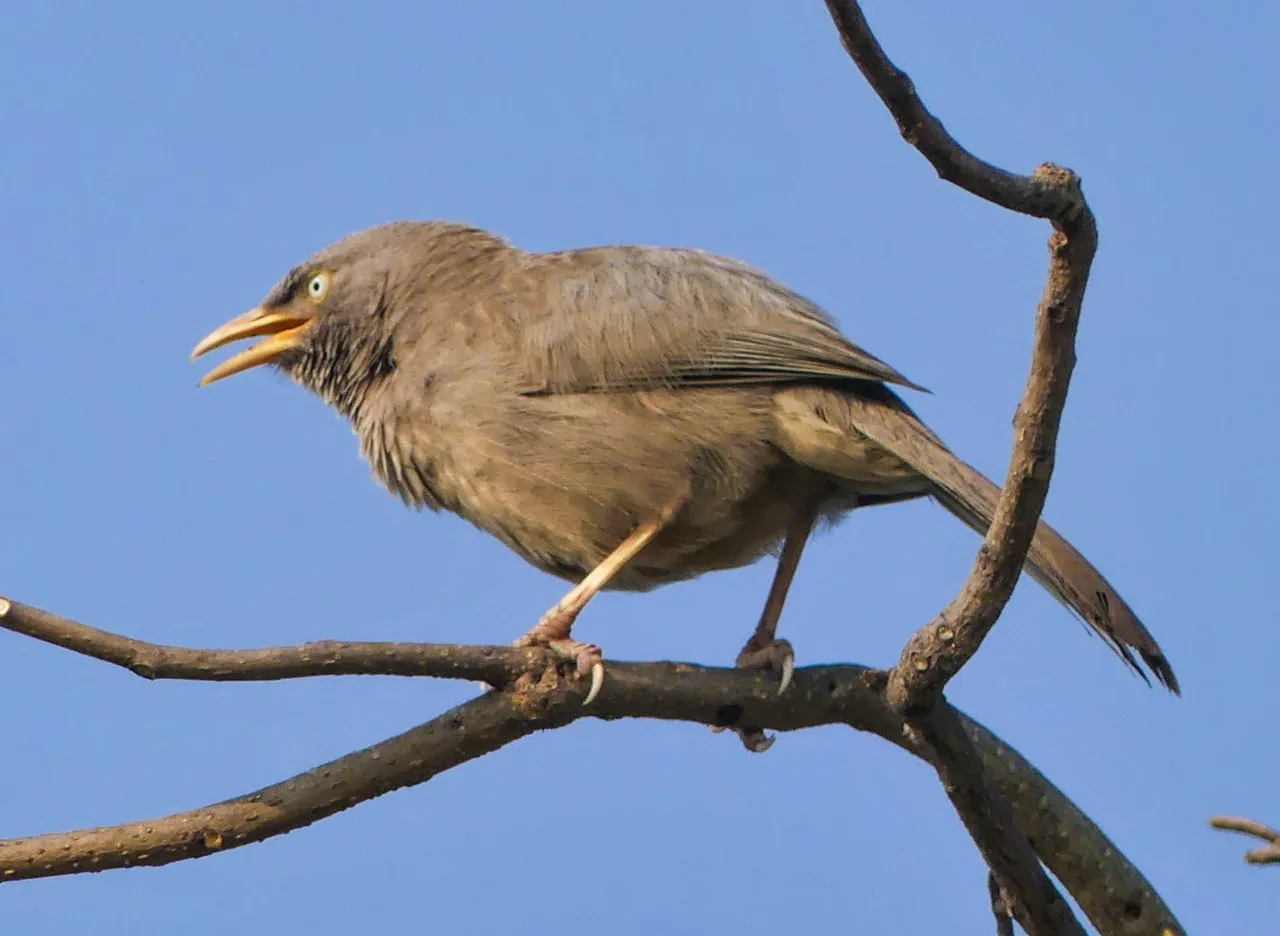
A jungle babbler (Turdoides striata) is probably more likely to be foraging on the ground in a noisy flock but i was lucky enough to come across one alone on a treetop at keoladeo national park. this one has that typical intense angry expression and piercing eye. and indeed when in a group there is as often as not a quarrel going on. with it's uniform grey coloration this babbler seems quite mundane on the ground but the blue sky backdrop makes it stand out much more.
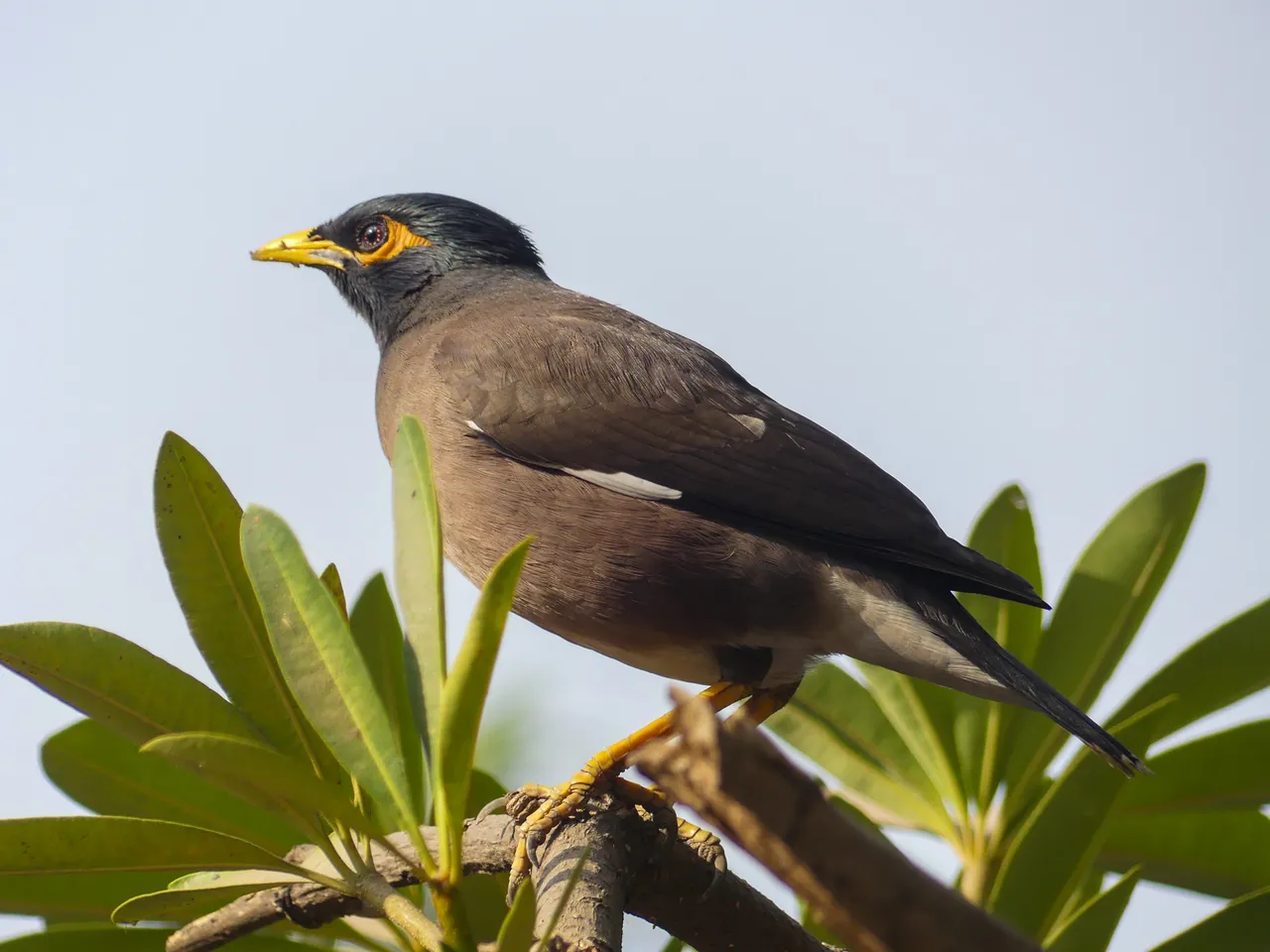
A common myna (Acridotheres tristis) can be found pretty much anywhere, including on top of a tree. they tend to be invasive and are viewed by some as pests but these clever birds can be taught to talk. they have even been known to function as judges in a shadow guessing contest right here on hive
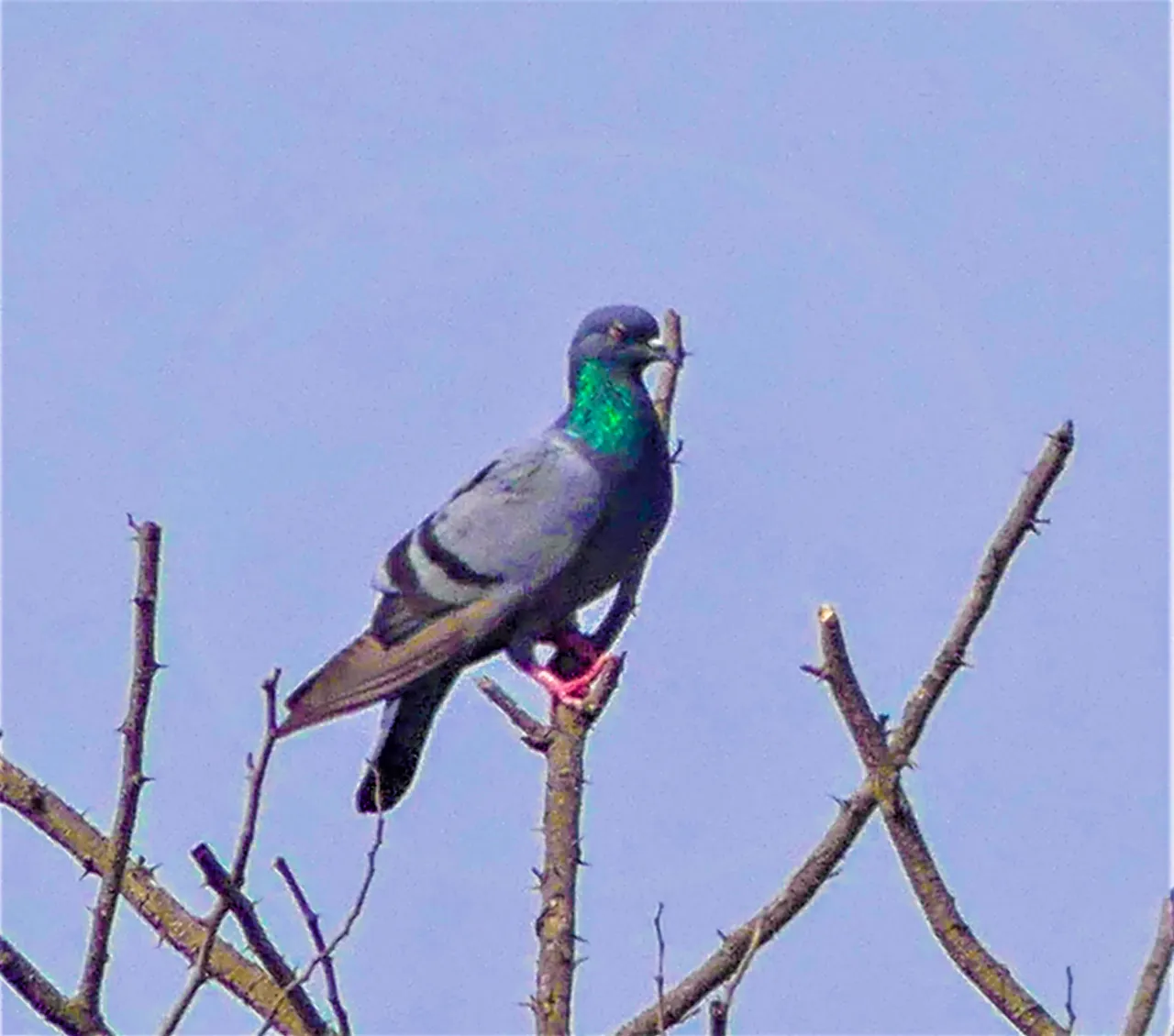
everybody is familiar with common pigeons (Columba livia) in cities all around the world however these birds can still be found in their natural habitat on cliffs and rock ledges or occasionally resting on a treetop. in the wild they are officially named rock doves with that classic green to purple shimmering neck and two dark bars on the wings.
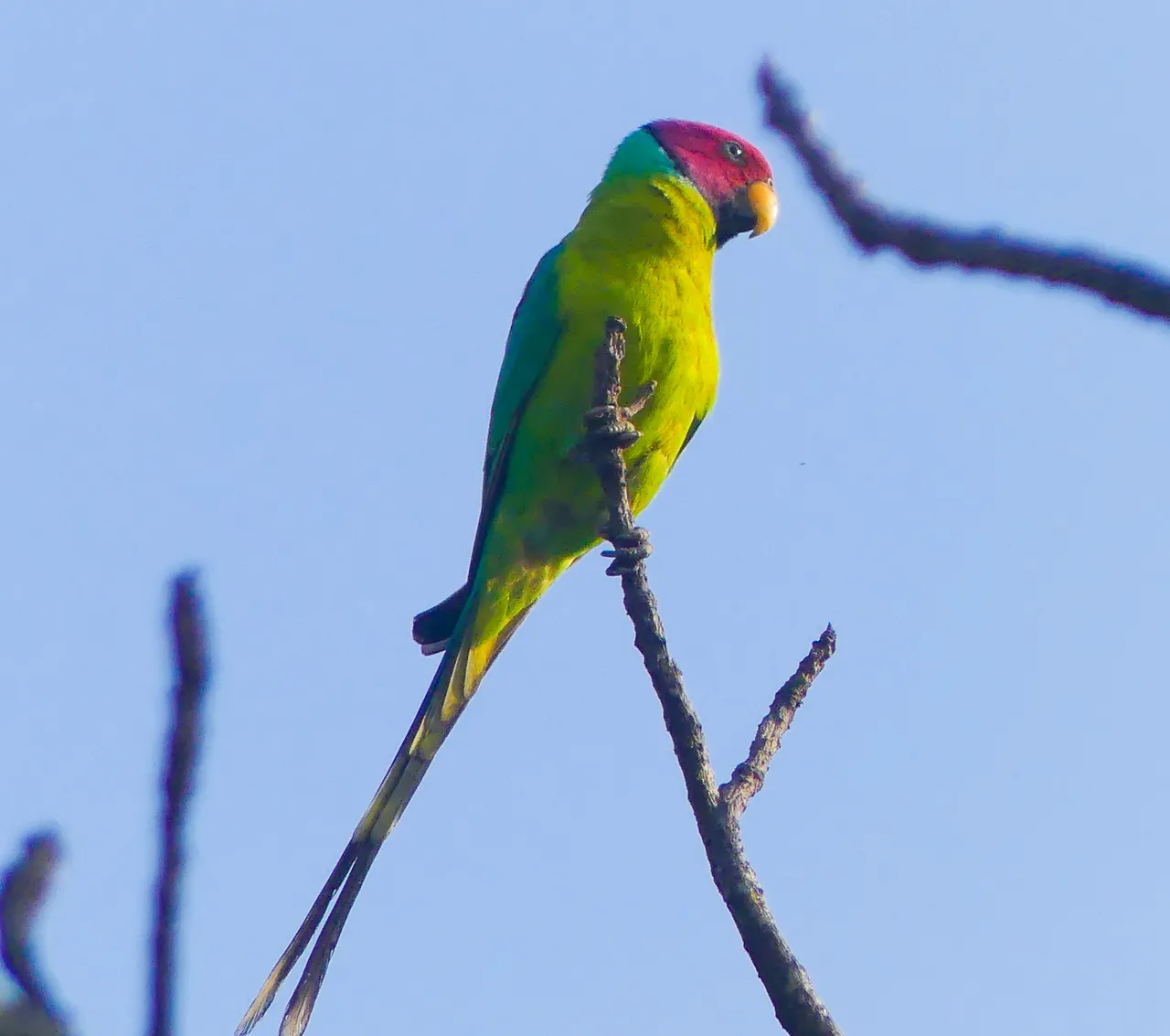
one of my favorite species we occasionally see in our garden is the plum-headed parakeet (Psittacula cyanocephala). they normally arrive in pairs. this photo is the male. the female has similar coloration but a duller blue-grey tone on the head. they make
an adorable and affectionate pair climbing around our trees and we are very happy to have them visit. they typically investigate holes made by other birds in our coconut trees but i have never seen them nesting. they can be taught to speak so don't be surprised if they also should happen to make an appearance as shadow guessing contest judges one day.
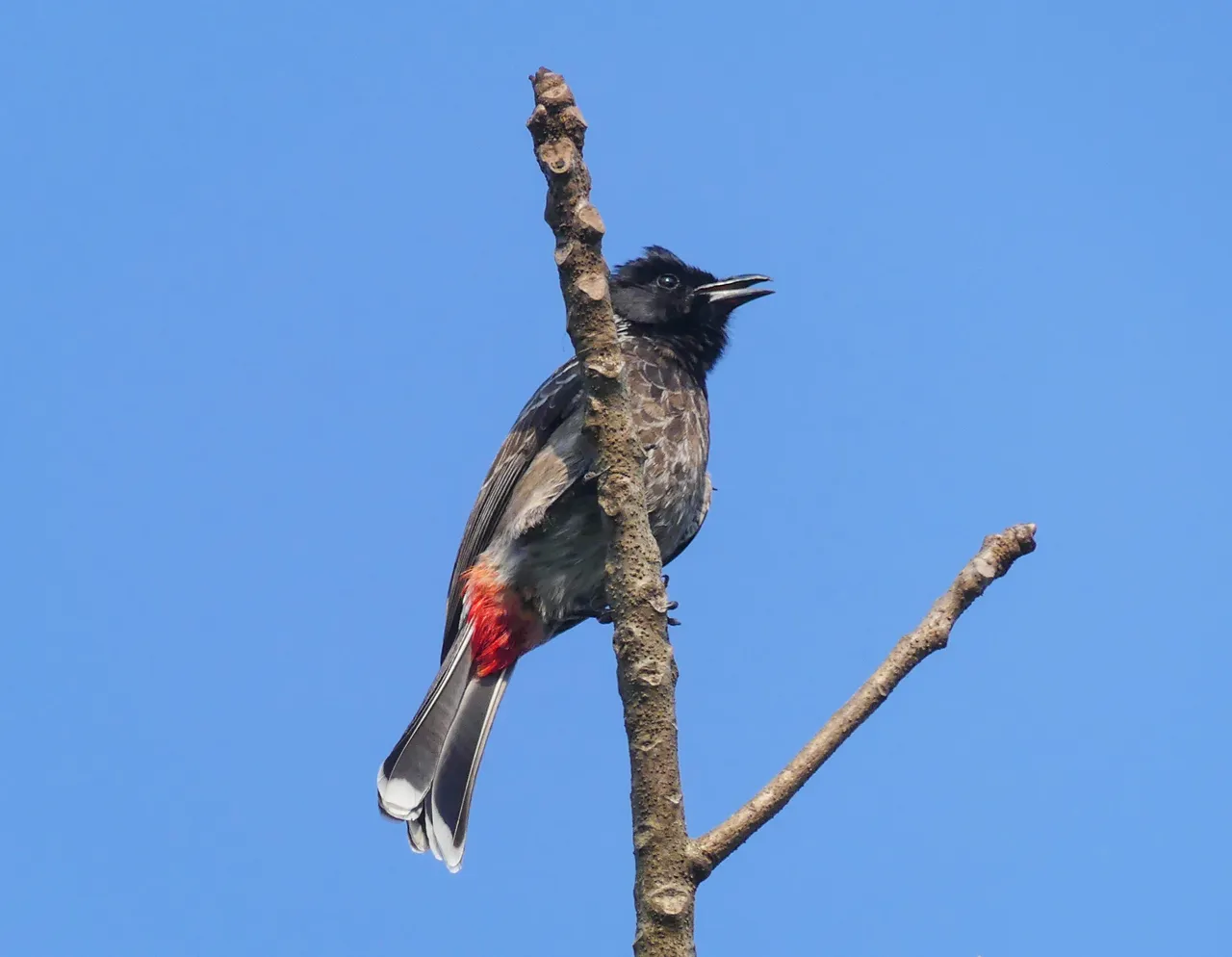
red-vented bulbuls (Pycnonotus cafer) nest in our trees and we enjoy seeing them daily. they are high and low, eating both insects in flight or chickoos and other fruits in the trees or on the ground. in case you are wondering what red-vented means... all birds both male and female have a single hole for urination, defecation and reproduction called a cloaca or vent. when birds mate there is no penetration, it is more like a kiss with their vents. so with their bright red vents i suspect that is one hot kiss.
